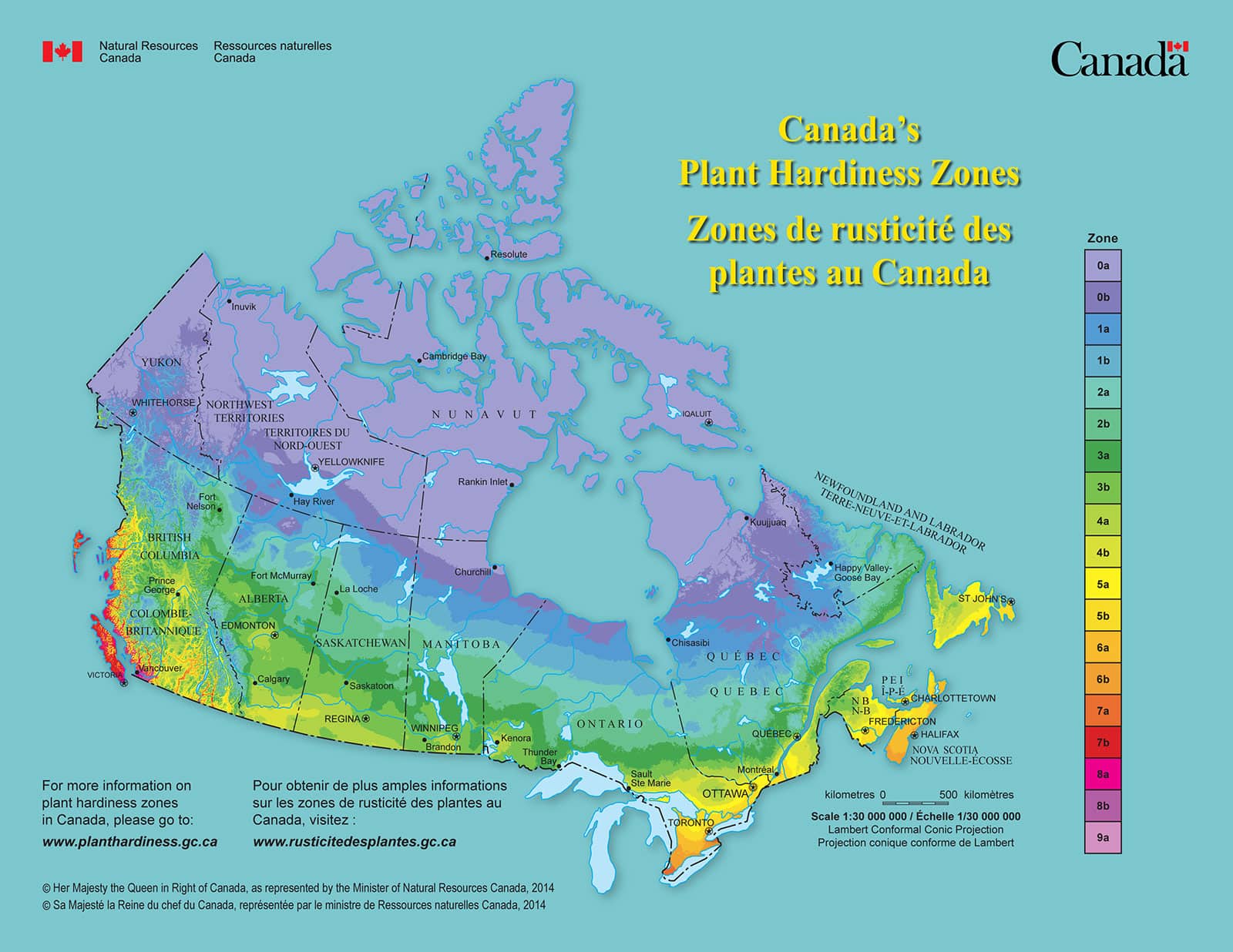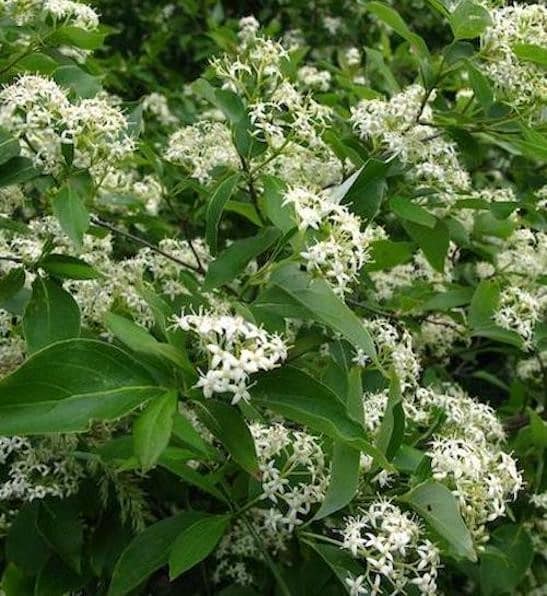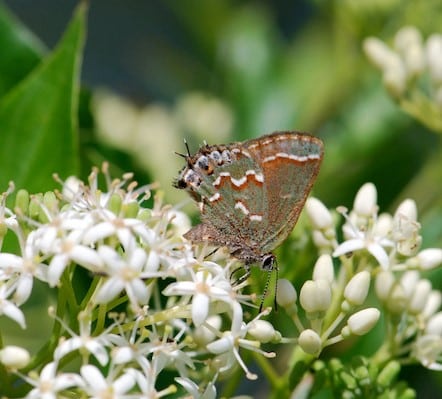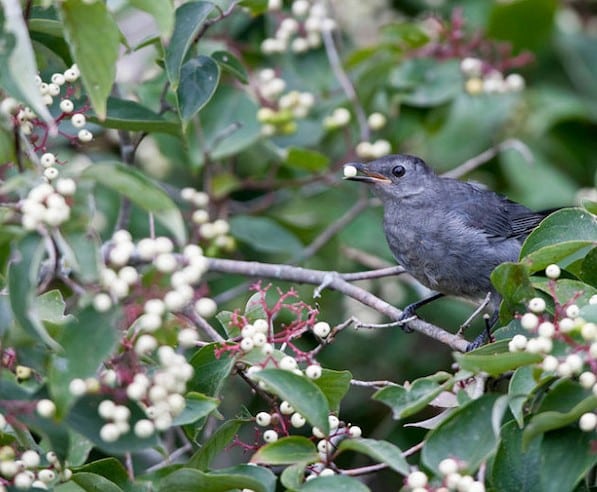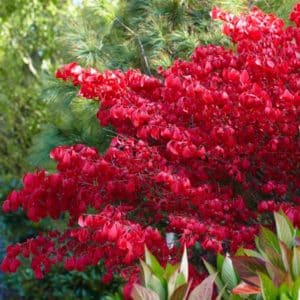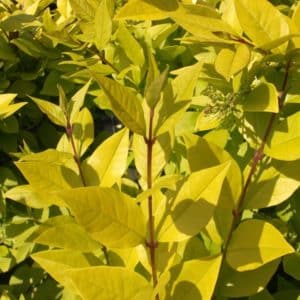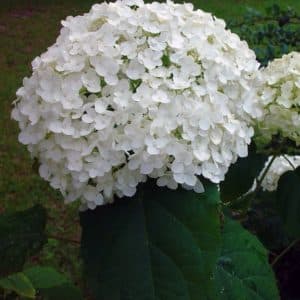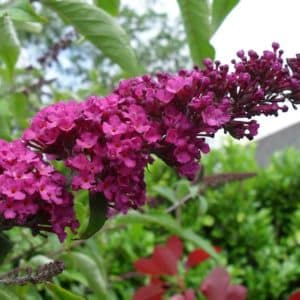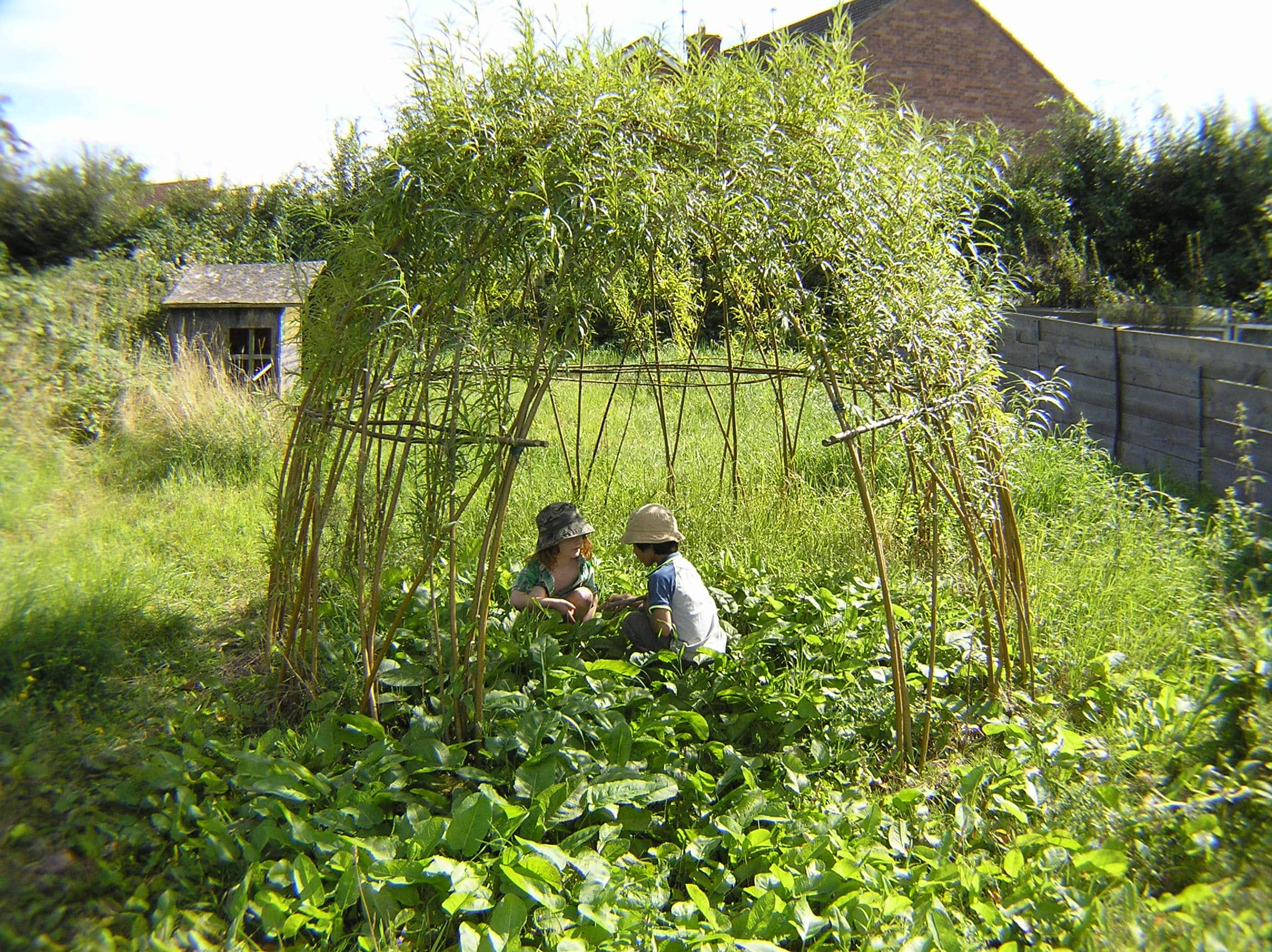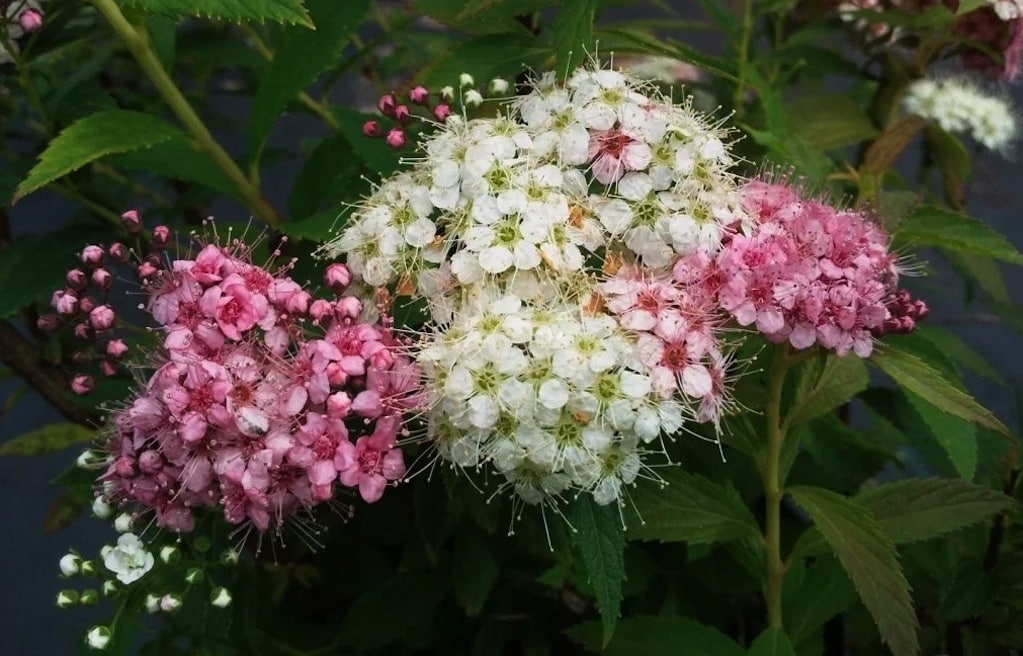Cornus racemosa
Gray Dogwood
- Main interest:
- attractive white fruits and flowers, greyish-red bark, tolerates wet soil, purplish-red foliage in fall, native
- Exposure:
- full sun to partial shade
- Soil humidity:
- moist to wet soil
- Flower colour:
- creamy white
- Fragrance:
- Non-fragrant
- Flowering period:
- May to June
- Foliage:
- greyish green
- USDA Hardiness:
- zone 4a: -34.5 °C (-30 °F) View Zone Map
- Mature height & width (max.):
- height: 12 ft (3.6 m) width: 12 ft (3.6 m)
- Use:
- renaturalization, soil stabilization, wetlands, hedge, mass planting, pollinator garden
Gray Dogwood is a mid to large sized, native, multi-branched, deciduous shrub. The foliage is narrowly oval to lance shaped, pointed, grayish green coloured and prominently veined. The leaves change to a warm burgundy, maroon colour in the fall. The showy flowers are tiny, creamy white coloured and appear abundantly in dome-shaped clusters between May and June. The blooms produce drooping clusters of round, white berries from late summer into the fall. The white berries look gorgeous against the contrasting, bright red cluster stalks. The bark is red with gray, which emerges as the stems become woodier. They remain eye-catching throughout the winter season.
Gray Dogwood (Cornus racemosa) is easy to grow, with tolerance to some summer drought as well as seasonally flooded conditions. Prune after blooms every few years to encourage new growth and bright colour as well as to maintain shape. Will spread through suckers, which should be removed if a contained behaviour is desired. This native is naturally found in open, wet forests, near wetlands, along shorelines, or around ponds. This shrub is beneficial for local pollinators and native wildlife species. Gray Dogwood, also called Northern Swamp Dogwood or Panicled Dogwood, is highly valuable for riparian planting projects to stabilize soil and reduce erosion.
- Main interest:
- attractive white fruits and flowers, greyish-red bark, tolerates wet soil, purplish-red foliage in fall, native
- Exposure:
- full sun to partial shade
- Soil humidity:
- moist to wet soil
- Flower colour:
- creamy white
- Fragrance:
- Non-fragrant
- Flowering period:
- May to June
- Foliage:
- greyish green
- USDA Hardiness:
- zone 4a: -34.5 °C (-30 °F) View Zone Map
- Mature height & width (max.):
- height: 12 ft (3.6 m) width: 12 ft (3.6 m)
- Use:
- renaturalization, soil stabilization, wetlands, hedge, mass planting, pollinator garden
Synonym(s): Cornus foemina subsp. racemosa
Also known as: Grey Dogwood, Panicled Dogwood, Northern Swamp Dogwood


